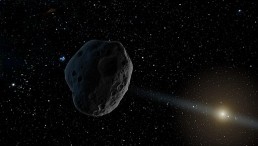research
In Snow and Ice—Researchers Reveal Century Old Journal in Antarctica
Sky-High Dig Reveals Ancient Paleoindian Workshop Site in Andes
Air pollutants have been linked to development of Autism Spectrum Disorders, according to a recent study
Beginning to be forgetful? Grab the 2Ws: Webster’s and Walnuts
Forget Ebola, Journey to Mars May Be More Lethal Death Sentence
A Magnetic Topsy Turvy Earth—When North Becomes South
ESA Asks Public to Name Philae Landing Site of Comet 67P This November
On Droughts and Dust Bowls—California Looks Back to 1934
How A Parasite Became a Power House—The Tale of Mitochondria
New Research Started After Rare Beaked Whale Washed Ashore Near Sydney
ESA Rosetta Spacecraft Is Showing Off Its ‘Cheops’
Most Popular

Prehistoric Pandemic: How Did ERV-FC Infect Mammals for 15 Million Years?

Smart Dinosaur? T. Rex Had Crocodile-Like Intelligence and Not Ape-Like Brains, Study Claims

S73-7 Satellite That Has Been Missing Rediscovered Orbiting Undetected for 25 Years

Gargantuan Sunspot 15 Times Wider Than Earth Erupts With Massive X-Class Solar Flare Causing Radio Blackouts





